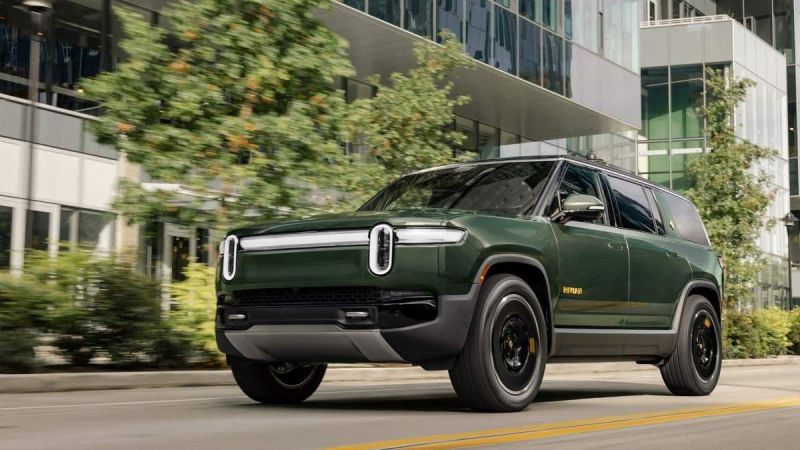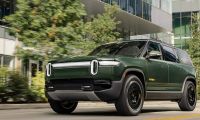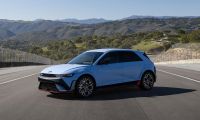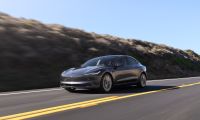This evening, while strolling through the "Rivian Electric Vehicles Discussion" group, I stumbled upon an intriguing post by Santiago Gomez. He had just returned from an ambitious 3,394-mile road trip to Florida and back, reaching as far south as Marathon Key. His experience was an eye-opener into the reality of long-distance EV travel in a Rivian R1S, showcasing both its strengths and the trade-offs compared to simply hopping on a plane.
Santiago shared, “Back home after a 2,929-mile road trip to Florida and back! On the way back, we only stopped once overnight because my wife just wanted to get home, so the second day was a long 2 p.m. to 3 a.m. jaunt from Chattanooga, TN, to Grand Rapids, MI. The farthest south we went was Marathon Key, FL, and our total mileage, including in-town driving, was 3,394 miles. The total round-trip cost was $483.79, averaging about $0.34/kWh, not including in-town charging. On the way back, we didn’t get any free charging like we did on the way down since the hotel chargers had strict four-hour limits and were slow 6kWh ChargePoint units, so I got up early to charge at a Tesla station five minutes away. Navigation initially called for 11 stops, but we only made eight, averaging 28.5 minutes per stop, which improved overall travel time due to better-than-expected range. The Rivian performed amazingly well, and highway assist significantly reduced driving fatigue. The only issues were that the navigation voice didn’t work about 15% of the time on the way back, and the blind spot/turn signal camera got laggy a few times. I wouldn’t hesitate to take another road trip in it, but we realized road trips aren’t really my wife’s thing, though our pup loved all the stops and meeting new people. However, the cost is hard to justify over flying, as we have cheap direct flights to Florida that, including the in-cabin pet charge, cost us under $300 round trip, plus we have access to a vehicle when we’re there. Regardless, the Tesla Supercharger network made this trip very doable, and I hope other charging networks catch up, so we don’t have to rely solely on Tesla for road trips.”

This post quickly gained traction, sparking a discussion among other EV enthusiasts. Brodie Wall commented, “Nice, about to do a Columbia, SC to Palm Springs, FL with the fam. Trying to guesstimate how many/how long our charges will be. This is helpful.” Harvey Payne added, “If the only goal is to get there, yes, fly. We like to drive because the road trip itself is part of the adventure, and we are also retired, so we aren’t as time-constrained either. Consider joining EV Road Trippers and sharing your write-up there.”
The EV Road Trip Trade-Offs: Enjoyment vs. Efficiency
Santiago’s experience highlights the dilemma many EV road trippers face, while the drive can be enjoyable, practical concerns like cost and fatigue remain. His Rivian R1S performed well, but the financial and logistical aspects of long-haul electric travel are still evolving. The reality is that, as much as road-tripping in an EV can be a unique adventure, it is not always the most efficient or economical choice compared to flying.
For instance, Santiago’s trip cost $483.79, which is relatively inexpensive compared to fueling a gas-powered SUV for the same distance. However, when compared to the $300 round-trip flights his family could have taken, the financial advantage of driving becomes less clear. Add in the long hours on the road and the necessity of frequent charging stops, and it’s understandable why some, like Santiago’s wife, might prefer the skies.
Charging Network Realities: The Dominance of Tesla
A crucial takeaway from Santiago’s trip is the role of charging infrastructure in making long road trips viable. While Rivian's network is growing, Tesla’s Supercharger stations remain the gold standard, offering reliable, fast charging. This aligns with the experience of another Rivian owner who shared his 1,300-mile trip using Tesla Superchargers, proving that Tesla's extensive network is still a major advantage for EV road trippers. Until other networks catch up, reliance on Tesla’s infrastructure remains a necessity for many non-Tesla EV owners.
Long-Distance EV Travel: The Pros and Cons
Santiago’s road trip underscores some key points about long-distance travel in an electric vehicle:
-
Advertising Pros: Comfortable ride, reduced driving fatigue with Highway Assist, lower fuel costs compared to gas, and the adventure factor of a road trip.
-
Cons: Charging infrastructure limitations, occasional software glitches (like navigation voice issues), long travel hours, and, in some cases, higher total travel costs compared to flying.
Despite these drawbacks, EV road trips can still be rewarding. For some, like Harvey Payne, the journey itself is the adventure. Others, however, may find that certain EV challenges, like unexpected breakdowns, make long trips more stressful than enjoyable.
The Moral of the Story: Know What You Want from Your Journey
Santiago’s road trip offers a valuable lesson: the best way to travel depends on your priorities. If speed and efficiency are your main concerns, flying remains unbeatable. If you enjoy the open road, scenic stops, and the challenge of electric travel, an EV road trip can be a fantastic experience, especially if you plan ahead for charging and potential hiccups.
For those considering an EV for their next big trip, it’s also worth reflecting on how Rivian’s premium features might enhance your experience. A long drive becomes far more enjoyable when you have high-quality sound and a comfortable interior to keep you entertained for miles on end.
What’s Your Take?
-
Have you ever taken a long EV road trip? How did it compare to flying in terms of cost, convenience, and overall experience?
-
What do you think is the biggest obstacle to making EV road trips as seamless as gas-powered ones?
Please share your thoughts in the comments below.
Narek Hareyan is a young automotive journalist with experience in a golf cart dealership and an interest in the automotive industry. Follow Narek on X for daily news coverage about cars.












Comments
That's not bad in terms of…
Permalink
That's not bad in terms of fuel cost for that distance. I purchased a phev due to charging scarcity on roadways and I'm averaging 30 mpg on my 2024 Mitsubishi Outlander phev. For my day to day, I usually go 1k plus miles between fuel fill ups. While flying is faster and sometimes cheaper, today's driver aids makes the trip less tiring.
Interesting article. I have…
Permalink
Interesting article. I have the most inefficient EV on the market today and the math still works for me. I am in Canada so I may not be privileged enough to get the ultra low cost flight options, but unless the road trip is for a single traveller, I am not sure if you can save much after factoring in multiple air tickets, parking at the airport, needing a rental car at the destination, etc, etc.
Having said all that, getting the math to work is only one aspect of it. How long can someone sit behind the wheel without going nuts is a very personal thing! I have my limits and it isn't very long haha!